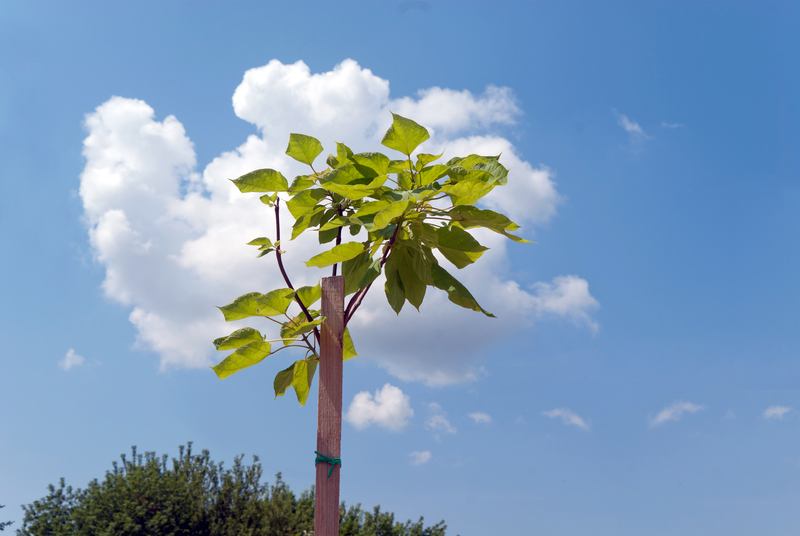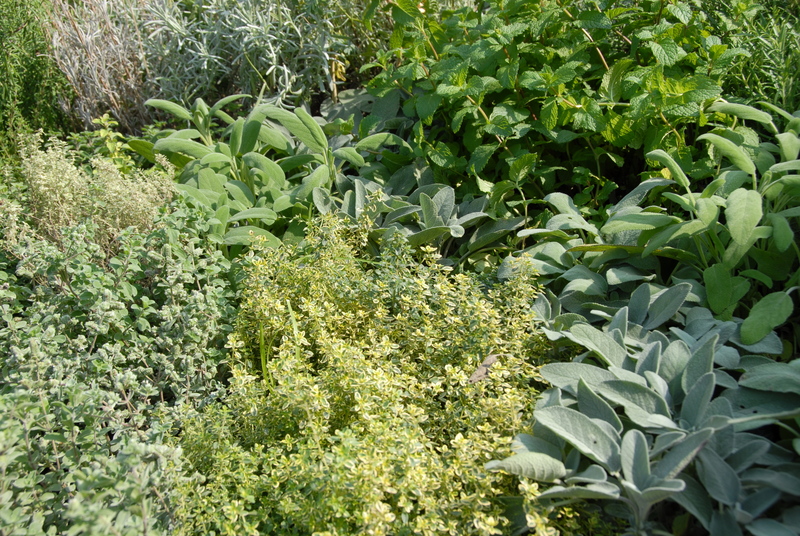Transforming a Neglected Garden: Kickstart the Makeover Process
Posted on 10/06/2025
Transforming a Neglected Garden: Kickstart the Makeover Process
Have you inherited a neglected garden that looks more like an urban jungle than a peaceful retreat? Or maybe you've simply lost track of your backyard, letting weeds and wild growth take over? Whatever the reason, transforming a neglected garden into a welcoming outdoor oasis is an achievable dream. In this comprehensive guide, you'll find expert tips and a step-by-step makeover process to help you revitalize your abandoned garden space and create a beautiful, functional landscape you'll love.
Assessing Your Neglected Garden
The first and perhaps most daunting step in your garden transformation journey is a thorough assessment. Before you grab the shovel, take time to observe and analyze what you're working with.
The Power of Observation
- Walk through the entire garden: Note which areas receive the most sunlight, where shadows linger, and where the soil is dry or boggy.
- Make a plant inventory: Identify what's thriving, what's barely surviving, and what's invasive.
- Look for hidden features: Old patios, hidden paths, and mature trees can all become focal points in your transformation plan.
- Take photos and make sketches: Visual documentation helps you track progress and plan changes.
Understanding Your Soil and Climate
_Before beginning your garden revival, it's crucial to understand the foundation: the soil and the microclimate._
- Test Soil Quality: pH kits are inexpensive and can reveal the health of your soil, guiding your planting choices.
- Note Drainage Patterns: Identify areas prone to pooling water or erosion.
- Observing Wind and Light: microclimate affects what plants will thrive where.

Clearing and Cleaning: The Renewal Begins
Transforming a neglected garden starts with a clean slate. Begin by scheduling a garden clean-up day (or weekend) and enlist help if you can.
Clearing Out Debris and Weeds
- Remove rubbish: Broken pots, old furniture, and general litter need to go.
- Tackle weeds: Pull by hand, dig out roots, and use mulches to suppress new growth.
- Trim trees and shrubs: Overgrown plants can be pruned to encourage healthy growth and improve light levels.
- Compost what you can: Leaves and soft green waste are great for making your own compost.
Dealing with Invasive Species
If your abandoned garden has been overtaken by invasive weeds like bindweed, brambles, or Japanese knotweed, don't rush. Proper removal might require repeated digging or, in some cases, professional help.
- Persistent hand weeding: Essential for perennial weeds.
- Consider weed barriers: Mulch mats or cardboard layers can suppress regrowth.
- Eco-friendly herbicides: Use as a last resort on stubborn invasive plants and always follow safety guidelines.
Planning Your Garden Makeover
Once the space is clear, it's time to design your transformed garden. Get creative, but bear in mind your assessment of the site and your own lifestyle needs.
Setting a Vision
- What do you want from your garden? Entertaining space, children's play area, or an edible garden?
- Choose a style: Cottage garden, minimalist modern, wildlife haven, or a blend?
- Define zones: Allocate areas for different functions--dining, relaxing, growing vegetables, etc.
Making a Master Plan
_Map out beds, paths, and patios. Mark where sun-loving and shade-tolerant plants will go. If you plan a pond or other feature, decide on placement now._
- Sketch it out: Even a simple scaled drawing helps you visualize and avoid costly mistakes.
- Budget and prioritize: List must-haves and nice-to-haves; invest in core areas first.
Soil Improvement: Laying the Foundations
A bountiful, healthy garden begins with the soil. After years of neglect, it's likely compacted, depleted, or imbalanced.
Steps to Heal and Feed Your Soil
- Aerate: Use a garden fork or mechanical aerator to loosen compacted earth.
- Add organic matter: Well-rotted manure, compost, or leaf mold will replenish nutrients and boost soil structure.
- Mulch generously: Helps retain moisture, suppress weeds, and encourages worms and soil life.
- Test and adjust: If your initial soil test shows acidity or drainage problems, amend accordingly.
Hard Landscaping: Pathways, Patios, and Structure
Garden transformation isn't just about plants. Walkways, edging, patios, and other structural elements set the bones of the garden.
Selecting Hardscape Materials
- Reusing old materials: Salvaged bricks, stones, and pavers can add character and save money.
- Gravel or wood chip paths: Quick, inexpensive, and suitable for informal gardens.
- Raised beds: Particularly good for poor soil and giving structure to planting areas.
Practical Tips for Installation
- Plan access and flow: Ensure paths link key areas and are wide enough for easy use.
- Level and drain: Proper sub-base prevents sinking and puddling.
- Edging: Well-defined beds look neater and are easier to maintain.
Plant Selection: Bringing Life Back
The right plant choices are key to a successful garden makeover. Think in terms of structure, color, seasonality, and maintenance.
Choosing the Right Plants for Your Site
- Native plants: Thrive with less care and support wildlife.
- Drought-tolerant varieties: Ideal for neglected gardens in dry climates.
- Low-maintenance perennials: Provide color and impact year after year.
- Shrubs and small trees: Quickly fill empty spaces and add vertical interest.
*When transforming an abandoned garden, don't be afraid to use bold textures and colors to create visual excitement. Choose a few statement plants as focal points and fill the gaps with easy-care groundcovers or bulbs for seasonal interest.*
Planting and Mulching: Filling in the Canvas
Top Tips for Planting Success
- Prepare the ground: Remove weeds, dig in compost, and level for even planting.
- Follow planting distances: Avoid overcrowding for healthier plants as they grow.
- Water well: Especially during the initial establishment phase.
The Importance of Mulching
- Suppresses weeds: Makes caring for your revived garden far easier.
- Retains moisture: Reduces the need for frequent watering.
- Feeds the soil: Organic mulches break down and improve fertility.
Adding Personality: Features and Decorative Touches
A successful garden transformation goes beyond plants and paving. Personalize your space to make it uniquely yours.
Simple Additions for Maximum Impact
- Garden ornaments: Birdbaths, sculptures, or upcycled art pieces add charm.
- Lighting: Solar or low-voltage garden lights create stunning nighttime ambiance.
- Seating areas: A bench in a shady corner offers a peaceful retreat.
- Water features: Even a small bubbling fountain adds calm and attracts wildlife.
- Raised beds or planters: Define zones and make maintenance easier.
Establishing a Maintenance Routine
Keeping Your Revived Garden Beautiful
A transformed neglected garden only stays beautiful if you keep up with the basics. The good news? A well-planned, well-mulched garden is easier to keep than a neglected one!
- Regular weeding: Little and often prevents overwhelming work.
- Seasonal mulching and feeding: Maintain soil health and plant vigor.
- Pruning and deadheading: Keeps plants looking tidy and productive.
- Check for pests: Healthy, diverse plantings are less prone to problems, but vigilance is key.
- Irrigation: Especially crucial in the first two years after planting.
_Keep a simple calendar or set phone reminders for key seasonal tasks. A little regular care ensures your new garden continues to flourish and thrive._

Common Challenges in Reviving a Neglected Garden
Overcoming Hurdles Through Planning and Patience
- Tough weeds and brambles: Persistence, proper tools, and sometimes professional help are required.
- Poor soil quality: Regular organic matter addition makes a remarkable difference.
- Sloping or awkward plots: Terraces or retaining walls can transform unusable areas.
- Budget constraints: Work in phases, salvage and recycle materials, and grow plants from seed.
- Lack of time: Focus on easy-care planting schemes and robust ground covers.
Kickstart Your Garden Transformation Today!
If you've been wondering how to turn your overgrown, unloved patch into a source of pride, now is the time to act. Every great garden began as a blank slate--or a mess! With observation, determination, and a clear plan, you can revive even the most neglected garden into a lush, vibrant, life-filled haven.
Remember: Transforming a neglected garden is a process, not a one-day miracle. Each step, from clearing out debris to planting your first blooms, is progress. Snap before-and-after photos, celebrate small wins, and enjoy the journey. In a year's time, you'll hardly recognize what was once an overgrown eyesore.
Start Today With These Action Steps:
- Walk your garden and take notes on what you see.
- Schedule your first big clear-up session--invite friends or neighbors to help!
- Draw a basic layout of your dream garden, setting realistic goals for year one.
- Source organic compost, mulch, and a few robust starter plants.
- Remember to enjoy the process--your garden makeover adventure has begun!
Your garden's true potential is waiting. Ready to roll up your sleeves and begin transforming your neglected garden? The sooner you start, the sooner you'll enjoy your own personal outdoor paradise.

